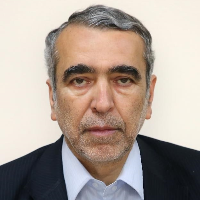Prioritization of indicators based on reducing the vulnerability of vital centers using network analysis (Study sample: District 5 of Tehran)
Due to its specific geographical location, Iran is always exposed to natural hazards, especially floods and earthquakes. For this reason, the preservation and maintenance of vital buildings in cities are of special interest to city managers and planners. In the current study, with the help of a study sample, vital centers in the fifth district of Tehran were analyzed and evaluated in terms of prioritization based on reducing vulnerability The criteria examined include: the spatial dimension of the region (physical, physiographic, texture) and the physical structure dimension (upgrade, infrastructure, structure, materials and orientation in the region. The research method of the current study is descriptive-survey. The collected information was first done in the form of documentary-libraries And information layers were prepared from the field visits and surveying organization, then the variables were compared and scored in pairs using Delphi technique.
20 reporters in the field of architecture, urban development, urban planning and crisis management have formed Statistical Society of this research And sample individuals were purposefully selected. The content validity of the model and its components was obtained by using the opinions of experts and due to the existence of internal relationships of some variables, the network analysis method (ANP) and to weight the indicators SUPER DECISION software was used.
In the following with using the Geographic Information System (GIS) and applying weight to the spatial dimensions of the region, Regions at risk were identified and Critical centers located in this region were specified then prioritized and analyzed in terms of vulnerability after weight application.
On the other hand The results of the research, indicate preventive measures, before the occurrence of natural hazards, to reduce financial and human losses in vital buildings in the region, also indicates places where these losses are higher than elsewhere. The results also indicate the use of the principles of architecture, urban development and urban planning proportional to the hazards in order to reduce the damage of natural hazards in the vital buildings of the region in order to achieve optimal urban management.
-
Analysis of determinants of urban resilience to water crisis in small cities: The case of Kabudarahang City
Ali Hosseini *, Mohammadhossein Javaherjood,
Geographical Urban Planning Research, -
Pathology of Human Resource Staffing System in Higher Education: Codification and Validation of a Model
Khaled Mirahmadi*, Abasalt Khorasani, Mohammadtaghi Nazarpour, Gholamreza Shams Mourkani
Iranian Higher Education, -
Landscape Design Solutions for achieving the goals of Green University (Case Study: Shahid Beheshti University Campus)
Maryam Khoramaraie, MohammadTaghi Nazarpour *, Saeid Norouzian-Maleki
Environmental Researches, -
Investigating the configuration of efficient spaces with the safe evacuation approach of the building during the accident (Case Study: Student Dormitory)
*, Ali Khaki, Peyman Bahramidoost,
Emergency Management,




